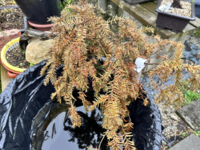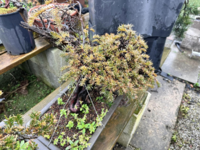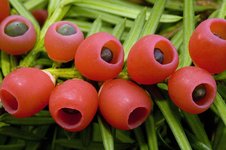ShadyStump
Imperial Masterpiece
It's my oldest daughter's tree, and she's quite proud of it even though she's never tried styling it, so I'd REALLY hate to lose it.



My first theory, when it the weather started warming and it started losing foliage, was maybe the roots froze some over winter. I cleaned out the worst branches about 6 weeks ago, and have fertilized with fish emulsion a few times since then. For a while it seemed to be doing better, but in the past two weeks it's gone from "not too bad" to this.
I'd call it lost, but there's one branch full of strong, green foliage.

Thoughts, tips, whatever?
Much appreciated!



My first theory, when it the weather started warming and it started losing foliage, was maybe the roots froze some over winter. I cleaned out the worst branches about 6 weeks ago, and have fertilized with fish emulsion a few times since then. For a while it seemed to be doing better, but in the past two weeks it's gone from "not too bad" to this.
I'd call it lost, but there's one branch full of strong, green foliage.

Thoughts, tips, whatever?
Much appreciated!







